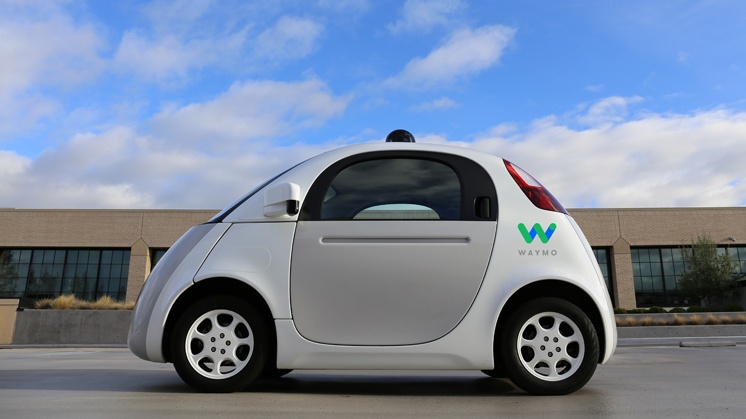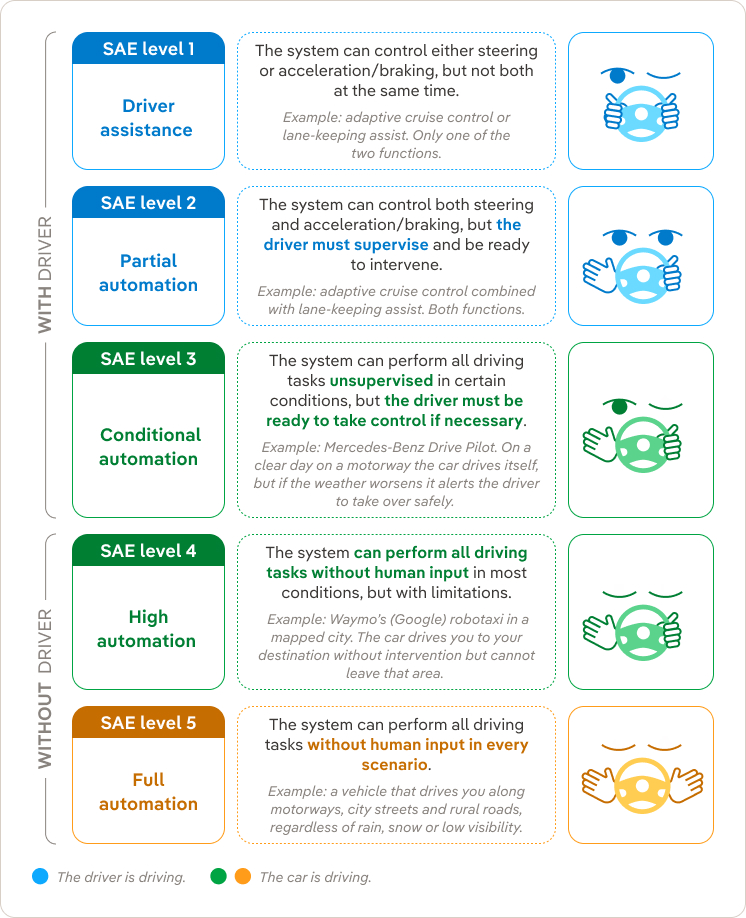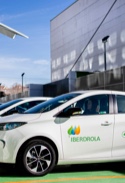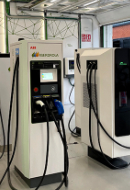The autonomous car
Could a hacker take over my self-driving car?
Cybersecurity Sustainable mobility AI
Artificial intelligence is set to accelerate the global adoption of autonomous vehicles, technology that is already in operation under controlled conditions in the United States, China and Europe. To become a widespread reality, manufacturers face the challenge of guaranteeing maximum safety for future buyers and users.

Autonomous vehicles (AVs) can drive themselves using a range of systems that perceive their surroundings and take decisions without human input. An idea that just a few decades ago seemed purely science fiction could make private transport accessible to anyone, regardless of their ability to drive, while also improving the efficiency of freight transport by eliminating the need for drivers.
What’s more, advances in autonomous driving technology – boosted by developments in artificial intelligence (AI) – could bring us closer to the long-awaited goal of zero accidents. This technology could hold the key to saving more than a million lives lost each year in road accidents worldwide, according to the World Health Organization.
How does a self-driving car work?
At the heart of every AV is a supercomputer or Electronic Control Unit (ECU), which processes perception, location and prediction data in real time, enabling it to make decisions and send the right signals to the actuators: brakes, accelerator, steering and indicators.
Are driverless cars really safe?
Several studies, including one published in Nature Communications  External link, opens in new window. based on data gathered over seven years, suggest that in most scenarios vehicles equipped with advanced driving systems are less likely to be involved in accidents than human-driven cars.
External link, opens in new window. based on data gathered over seven years, suggest that in most scenarios vehicles equipped with advanced driving systems are less likely to be involved in accidents than human-driven cars.
However, work remains to be done before level 5 autonomous driving can be achieved, where no human intervention is required under any driving or weather conditions. Alongside enhancing this level of autonomy, minimising the risk of cars being hacked by third parties is also a pressing challenge.
Levels of vehicle automation
The levels of automation defined by the SAE (Society of Automotive Engineers) range from 0, no automation, to 5, full automation.
Level 4 already allows driving without a driver, even without a steering wheel or pedals, although certain conditions must be met, such as favourable weather or being within mapped zones. Developing advanced AI solutions is the main challenge to reaching level 5 autonomous driving.


Detecting vulnerabilities
For autonomous cars to become an established model of sustainable transport, manufacturers must guarantee maximum safety for buyers and earn the trust of sceptics.
AVs still face significant cybersecurity risks, particularly those models that remain constantly connected to remote networks. This connectivity opens multiple vectors through which critical functions such as brakes, steering or acceleration could be manipulated remotely.
A turning point came in 2015 when, as part of an experiment External link, opens in new window., IT specialists Charlie Miller and Chris Valasek took control of a Jeep Cherokee through a flaw in its Uconnect system, forcing Chrysler to recall over a million vehicles. A decade later, in 2025, security researcher Eaton Zveare uncovered another serious vulnerability in the web portal of a major car manufacturer – since corrected – that exposed private vehicle data and could have allowed hackers to unlock and start cars remotely.
External link, opens in new window., IT specialists Charlie Miller and Chris Valasek took control of a Jeep Cherokee through a flaw in its Uconnect system, forcing Chrysler to recall over a million vehicles. A decade later, in 2025, security researcher Eaton Zveare uncovered another serious vulnerability in the web portal of a major car manufacturer – since corrected – that exposed private vehicle data and could have allowed hackers to unlock and start cars remotely.
In response to such incidents, manufacturers and regulators have reinforced measures such as encryption, authentication and secure updates, while also using AI to detect and neutralise potential attacks in seconds. To stay a step ahead, some brands even offer substantial rewards to ethical hackers who report existing vulnerabilities.
Cybersecurity risks
Taking control of the car is not the only thing a hacker who gains access to a self-driving vehicle could do. Here are the potential risks to this innovative sector:
- Data theft: Because these cars connect to the cloud to run, the hacker might access the driver's data while hurting the company's reputation in the process.
- Car misfunctions: It could be as simple as the windscreen wipers activating or as fatal as braking in the middle of the motorway which could have very serious consequences.
- Loss of control: This situation can lead to extremely high risk situations for the vehicle occupant and their surroundings.
A key distinction lies in the type of connectivity: vehicles permanently online (for telemetry, apps, real-time updates) are more vulnerable than those isolated or with limited connectivity, although these too remain exposed to physical intrusions or temporary device connections.

Sustainable mobility
Iberdrola reinforces its strategy through its Sustainable Mobility Plan.

Driverless vehicles for the disabled
The future of transport for people with disabilities?

Smart Mobility Lab
One of the main laboratories for charging electric cars.

Iberdrola with electric mobility
Find out about our work to enable access to this kind of sustainable transport.
The present and future of autonomous vehicles
Autonomous driving at SAE level 4 (in limited conditions) is already a reality, and driverless cars are being tested in parts of the United States, China and Europe. Giants such as Tesla, Waymo (Google), Mercedes-Benz, Mobileye and Baidu have or will soon have commercial robotaxi programmes.
The rapid progress of AI is speeding up the adoption of autonomous driving. Since 2025, AVs have been introduced into commercial logistics and public transport services, with Scania and Aurora already operating some autonomous truck routes. The commercial rollout of both light and heavy autonomous vehicles in Europe is expected to gain momentum from 2027 onwards.
Although the absence of adequate regulation remains an obstacle to widespread adoption, governments are moving forward, aware of the strategic importance of securing a position in a sector that promises accessible, safe, efficient and cost-effective transport.










